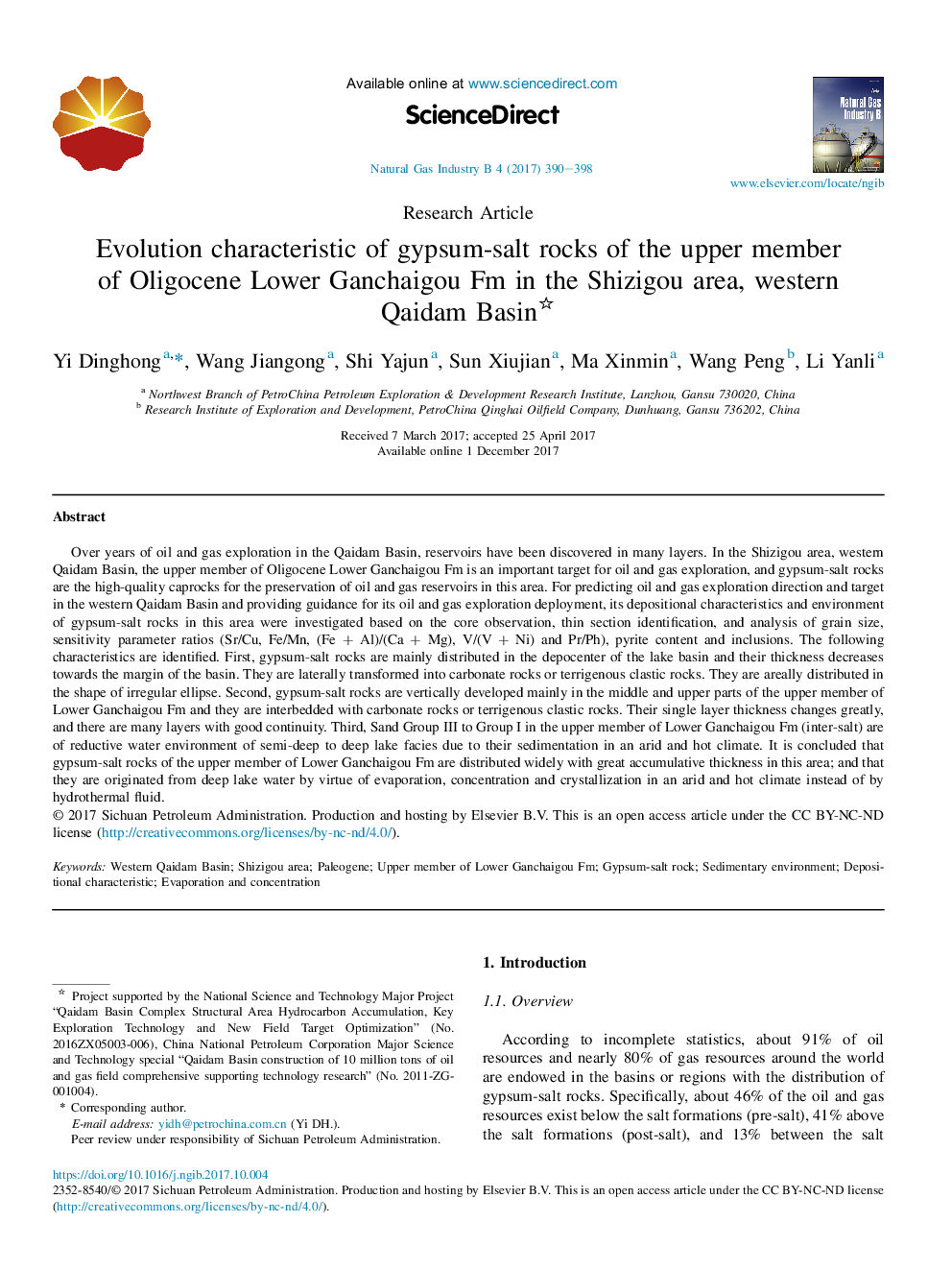| Article ID | Journal | Published Year | Pages | File Type |
|---|---|---|---|---|
| 8109684 | Natural Gas Industry B | 2017 | 9 Pages |
Abstract
Over years of oil and gas exploration in the Qaidam Basin, reservoirs have been discovered in many layers. In the Shizigou area, western Qaidam Basin, the upper member of Oligocene Lower Ganchaigou Fm is an important target for oil and gas exploration, and gypsum-salt rocks are the high-quality caprocks for the preservation of oil and gas reservoirs in this area. For predicting oil and gas exploration direction and target in the western Qaidam Basin and providing guidance for its oil and gas exploration deployment, its depositional characteristics and environment of gypsum-salt rocks in this area were investigated based on the core observation, thin section identification, and analysis of grain size, sensitivity parameter ratios (Sr/Cu, Fe/Mn, (Fe + Al)/(Ca + Mg), V/(V + Ni) and Pr/Ph), pyrite content and inclusions. The following characteristics are identified. First, gypsum-salt rocks are mainly distributed in the depocenter of the lake basin and their thickness decreases towards the margin of the basin. They are laterally transformed into carbonate rocks or terrigenous clastic rocks. They are areally distributed in the shape of irregular ellipse. Second, gypsum-salt rocks are vertically developed mainly in the middle and upper parts of the upper member of Lower Ganchaigou Fm and they are interbedded with carbonate rocks or terrigenous clastic rocks. Their single layer thickness changes greatly, and there are many layers with good continuity. Third, Sand Group III to Group I in the upper member of Lower Ganchaigou Fm (inter-salt) are of reductive water environment of semi-deep to deep lake facies due to their sedimentation in an arid and hot climate. It is concluded that gypsum-salt rocks of the upper member of Lower Ganchaigou Fm are distributed widely with great accumulative thickness in this area; and that they are originated from deep lake water by virtue of evaporation, concentration and crystallization in an arid and hot climate instead of by hydrothermal fluid.
Keywords
Related Topics
Physical Sciences and Engineering
Energy
Energy Engineering and Power Technology
Authors
Dinghong Yi, Jiangong Wang, Yajun Shi, Xiujian Sun, Xinmin Ma, Peng Wang, Yanli Li,
